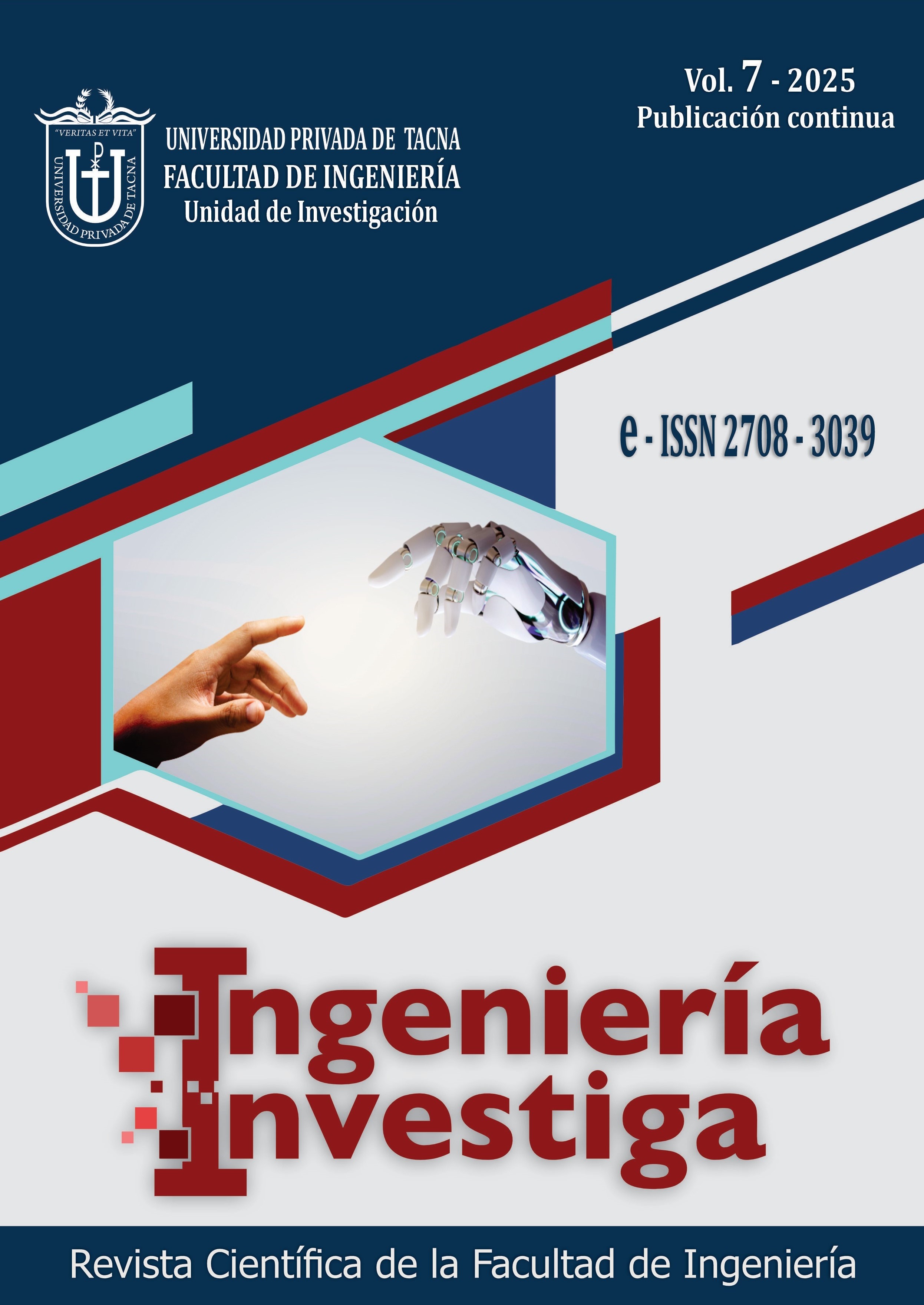Ceramic Matrix Based on Red Clay Functionalized with Fe₂O₃ for Arsenic Adsorption
DOI:
https://doi.org/10.47796/ing.v7i00.1302Keywords:
adsorption, water quality, arsenic removalAbstract
Arsenic contamination in water represents a serious public health issue worldwide, particularly in regions where natural or anthropogenic sources contribute to concentrations exceeding the maximum permissible limit of 0.01 mg/L established by the World Health Organization. This study evaluated the efficiency of a ceramic matrix made from red clay impregnated with ferric oxide (Fe₂O₃) for arsenic removal and water quality improvement. Water samples were collected from the Apacheta River and treated using a continuous-flow system with supports calcined at 800 °C. Arsenic concentrations were determined by spectrophotometry, and physicochemical parameters were analyzed before and after treatment. The results showed a reduction in arsenic concentration from 0.17 mg/L to 0.0053 mg/L, achieving a removal efficiency of 94.5 %, along with improvements in turbidity, electrical conductivity, and dissolved solids. Statistical analysis revealed significant differences (p < 0.05) in all evaluated parameters. In conclusion, the proposed ceramic matrix represents a viable and sustainable technological alternative for the purification of natural waters contaminated with arsenic, applicable in various regions affected by this pollutant.
Downloads
Downloads
Published
How to Cite
Issue
Section
License
Copyright (c) 2025 Abrahán Fernando Trejo Espinoza, Percy Fermín Velásquez Ccosi, Juan Carlos Ponce Ramírez

This work is licensed under a Creative Commons Attribution 4.0 International License.








